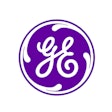
The harsh realities of COVID-19 have placed incredible strain on today's healthcare system, with numerous radiology groups experiencing extreme financial uncertainties. At the beginning of this pandemic, for instance, the federal government recommended that all elective appointments and procedures be canceled or postponed, which led to a massive decline in imaging volumes and large decreases in revenue.
 Dhruv Chopra, CEO of Collaborative Imaging.
Dhruv Chopra, CEO of Collaborative Imaging.Practices have also resorted to virtual methods, such as teleradiology, to conduct business and continue serving patients and gather much-needed revenue. However, with summer approaching, many individual states have lifted "stay-at-home" orders, enabling previously canceled radiology screenings to be rescheduled.
Radiology groups need to devise strategic plans to weather the remainder of this pandemic and for the imminent spike in business once local restrictions are reduced. Below are best practices radiologists should consider as they continue operating under COVID-19 and beyond.
Review revenue cycle management
Over the course of the COVID-19 pandemic, radiology practices have lost around 55% of their revenue due to the decline in outpatient imaging volumes, according to the Medical Group Management Association. A time of diminished revenue underlines the importance for practices to enhance revenue cycles now to recover as much as they can before falling even more behind.
Whether a practice's billing is done in-house or outsourced to a third-party, it's important for the practice to utilize readily available technology to internally "scrub" claims for the accuracy and completeness required for clean filing. Technology enables a rules-based review of billing files that's not dependent on a person and ensures accuracy before submission. It also can help identify opportunities for process improvement to reduce the potential of any future errors.
Additionally, practices should investigate further into their revenue cycle management (RCM) processes for any possible billing gaps. Numerous gaps can often go unnoticed and, if left unchecked, can lead to significant subsequent issues and revenue losses or delays. To avoid any further revenue complications, practices should consider upgrading their billing service solutions.
The most successful RCM approaches automatically focus on billing gaps by addressing reasons that are not the fault of the billing function but of the payor. These types of processes are technologically driven and not people-dependent or intensive in numbers. Amid the COVID-19 environment, many in-house and third-party billing services have had to figure out how to decentralize the operation to homes, which has strained the dominant operations of practices as gaps are found. Installing billing systems that address these challenges will help institutions to recognize possible gaps and prevent any interruption in radiologist workflow.
Upgrade scheduling capabilities
As more states begin to reopen businesses and reduce social distancing restrictions, radiology practices need to prepare for a large influx of rescheduled and newly scheduled exams. Although this business spike will be a welcome sign to practices across the country, it could also easily overwhelm those who are ill-equipped to handle the increase in demand. It is imperative that practices plan for both best-case and worst-case scenarios in scheduling new screening activities and the effect it has on staff safety.
This preparation must begin with adjusting and upgrading current scheduling capabilities, which can be accomplished by implementing real-time scheduling. No matter the circumstances, rescheduling hundreds or even thousands of appointments and exams will be a tall order. But relying on traditional scheduling software will make it much more difficult.
Real-time scheduling technology is able to automate the different processes that go into setting and keeping track of patient appointments, which can prevent any backlogs or congestion in the process. This not only saves valuable time and money but also salvages much-needed revenue by limiting any further cancellations or postponements. Patients will also benefit by being able to instantly schedule appointments and procedures.
Improve radiology workflow
Although the handling of rescheduling appointments and procedures will be incredibly demanding, practices must also focus on improving workflows. Radiologists may find it difficult to properly manage all the added exams and procedures, which could lead to inefficient workflow processes. With the number of radiologists currently experiencing burnout at an all-time high, it is especially important to simplify their workload in the current climate. All current inefficiencies should be evaluated and ultimately eliminated.
Practices can eliminate their individual inefficiencies by utilizing advanced, cutting-edge workflow software. Applications that identify coding errors, enhance practice growth, and improve communications will augment each practice's efficiency while new exams and appointments begin to filter in. These applications can lead to shorter report turnaround times while also improving overall patient care -- a win-win for practices and their patients.
Maneuvering through the remainder of this pandemic and preparing for the uptick in business will be no easy feat for any practice, no matter their financial situation. By taking the necessary steps, practices will be fully equipped to recover revenue and handle the large influx of patients they are sure to receive in the coming weeks or months. However, those who are ill-prepared may not withstand the immediate future.
Dhruv Chopra is the CEO of Collaborative Imaging, a radiologist-owned alliance. He previously spent 15 years as an executive with multiple billing companies in the radiology industry, where he gained an appreciation for how much physician money is lost due to several inefficiencies.
The comments and observations expressed are those of the author and do not necessarily reflect the opinions of AuntMinnie.com.



















